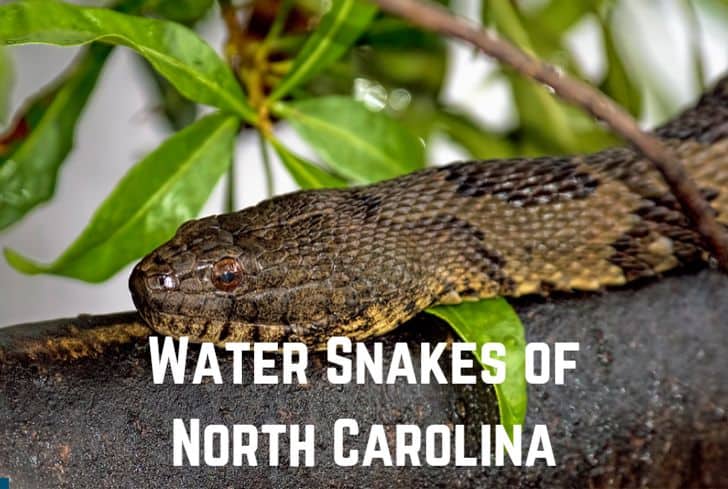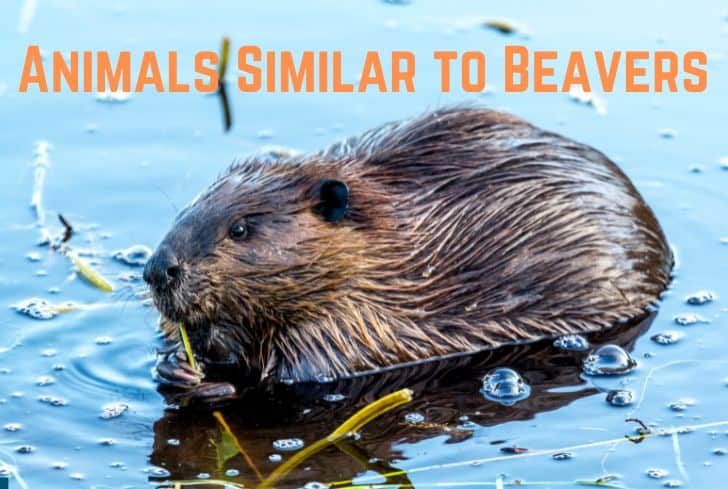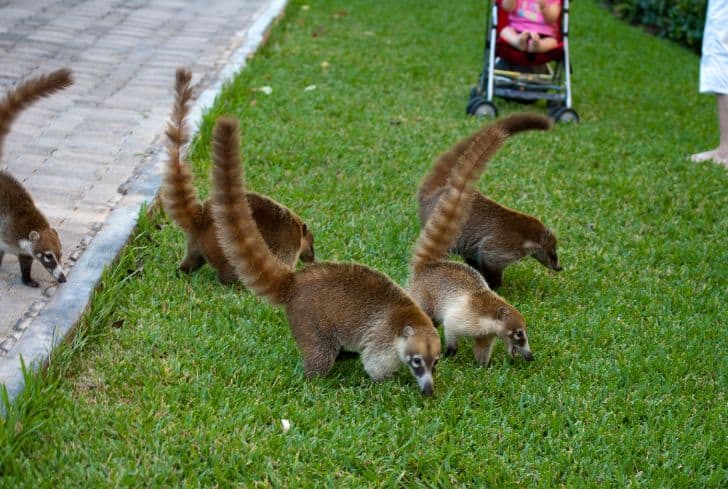20+ Weird Facts About The Dolphins That Might Surprise You

Dolphins, these cute, friendly cetaceans are known for being smart, curious, extremely playful, and helpful creatures that can learn to perform impressive tricks. These warm-blooded mammals are mostly saltwater creatures, breathe air through a blowhole, and give birth to calves. Let’s know more about them through the following 20+ weird facts about the Dolphins.
20+ Weird Facts About the Dolphins
Fact 1: Dolphins can live up to 50 years!
Living in the wild and depending on species, dolphins can live 40-70 years because of their excellent hunting and survival skills. But captivity shortens a dolphin’s lifespan.
Fact 2: Heightened senses and skills
Dolphins can move their eyes separately from each other. It is beneficial in observing their surroundings, especially when they face danger. Their hearing power is ten times better than any humans.
Some dolphins can hold breath up to 30 minutes, and they have been recorded to dive to 1000 feet (usually they spend almost their entire lives in shallow waters).
They can even swim at speeds of 25 miles per hour (typically average about 7 or 8 miles per hour) if they want. However, dolphins have a poor sense of smell.
Fact 3: Power Nap
Dolphins are champion in taking power naps. Instead of sleeping at a time for several hours, they rest one hemisphere of their brain for 15 to 20 mins at a stretch, while the other part of their brain remains alert and awake.
They take these kinds of “naps” several times each day. Therefore, dolphins can continue swimming, breathing without drowning (it only takes a spoon full of water in their lungs to drown them), and remain safe from predators 24/7 while napping.
Fact 4: Dolphin species are as many as 44
There are around 44 different species of dolphins. Dolphins’ physical attributes and behavior can vary considerably as per their species. The most common is the Bottlenose dolphin.
The smallest of their kind is very rare Maui’s dolphin or popoto, which is 3-4 feet long, while the largest killer whale (also called Orca) is 30 feet, ten times longer than the smallest dolphins! World’s largest dolphin is known by the name Boto.
Fact 5: Dolphins never chew with teeth
Dolphins have 100 teeth! But they never chew food using their teeth. Instead, dolphins use teeth only to catch their prey, such as fish, crustaceans, and squid, and grab the prey until they swallow it whole.
Fact 6: Multiple stomach chambers
These carnivores are predators and eat an average of 33 pounds of fish per day, so their stomachs are designed for rapid digestion. They have multiple stomach chambers.
Since they forgo chewing, digestion occurs in one of the chambers of their stomach or part of their abdomen. The other chambers store food before its digestion.
Fact 7: Dolphins’ useful tool- echolocation
Dolphins identify things from hundreds of yards away because of their natural sonar ability, called echolocation. It is a natural version of radar. They use echolocation (like bats) to find food, navigate in water and evade predators.
They make a series of high-pitched clicks that bounce off the distant objects and create an echo. Dolphins listen to the echoes and judge their location and determine the size and shape of nearby objects; they can even distinguish between a golf ball and a ping pong ball hitting the water.
An organ called “melon” in a dolphin’s head is responsible for echolocation. It’s dolphin’s teeth that pick up the echoes, and not ears.
Fact 8: Remarkable altruism
Dolphins are altruistic animals. They care for their injured, old, and sick members and help the wounded to reach the surface to breathe. They are compassionate to other species; also, they extend help crossing the species-barrier. There are many instances where dolphins helped humans and even whales.
Fact 9: Dolphins give birth to just one calf
Female dolphins called cows give birth to just one calf and carry their babies for nine to 17 months, depending on their species before giving birth to a calf.
Surprisingly, dolphins are the only mammals on earth to give birth tail first, instead of the head and that they don’t drown during the birthing process. Baby is nursed for one to two years, and stays with its mother up to the next seven to eight years, before mating and having its own calves.
Fact 10: Dolphins have names!
No, they aren’t swimming around with name tags, but with its unique whistle. As per the scientists, dolphins use these signature whistles to recognize each other and call out to one another for life, and female dolphins may even teach their calves their whistles before they’re born. Dolphins may be able to remember other dolphins’ whistles for decades.
Fact 11: Unique identification
The dorsal fin of each dolphin is unique, just like snowflakes or fingerprints in humans. It can be very useful in identification.
Fact 12: Smart communication
Dolphins possess several highly developed forms of communication and make a variety of vocalizations to communicate with one another underwater.
They make clicking sounds to find prey and navigate the ocean and use whistling to call out other dolphins. Dolphins produce loud burst-pulse sounds when they need to scare off a nearby shark or reprimand their offspring for bad behavior.
Fact 13: Their language remains a mystery
Dolphin vocalizations have been studied and recorded by marine scientists for decades, but many aspects of their language are still unknown. Scientists have not yet found the meaning of the individual units of dolphin sounds, or the link between the animals’ vocalizations and their behavior.
With the new technologies, including algorithms and high-frequency underwater recorders, hope they will be able to unlock the mystery of the dolphin language.
Fact 14: Dolphins make friends
Dolphins are highly social animals, and scientists are still discovering fascinating details about how these aquatic mammals socialize with one another.
Scientists found that dolphins have friends, and they segregate themselves into friend groups. Dolphins prefer the company of certain peers more than others, just like humans. They are friendly to even humans.
Fact 15: They are playful, teasers, and hot!
Dolphins love to play with their pod members. They are often found playing and teasing other animals living underwater. Besides humans, dolphins are also one of the most prolific sexual pleasure seekers in the world that mate for fun, not to breed. They spend 80% of their time in the pursuit of it.
Fact 16: Dolphin’s skin gets regenerated every two hours
A dolphin’s skin looks and feels super smooth and sleek. Dolphin’s epidermis or outer layer of skin gets replaced with new skin cells every two hours. As their skin regenerates so often, it stays smooth and, as most scientists believe, reduces drag as they swim.
However, their skin is very delicate and gets injured at the slightest touch of hard surfaces. Don’t worry; their skin also heals very fast that even the deepest of wounds can be cured within a short period.
Fact 17: The oldest dolphin in captivity
Dolphin’s lifespan mainly varies by species. Most dolphins live for a few decades in the wild, while their lifespan drastically gets reduced only a few years in captivity.
Surprisingly, Nellie, a bottlenose dolphin, lived for more than sixty years in captivity. It was the oldest dolphin who used to live in a marine entertainment park in Florida. Nellie was born in 1953. She appeared on many TV shows and commercials and performed tricks for the park’s attendees before passing away in 2014.
Fact 18: Superpod with more than 1000 dolphins
Dolphins live in groups, known as pods that contain dozens or hundreds of member dolphins. While swimming in a pod, dolphins work together and cooperate to hunt prey, evade predators, raising calves, and care for sick or injured members.
Sometimes different pods merge, forming a superpod consisting of more than 1000 dolphins. But superpods are temporary group formation that only occurs in parts of the ocean with plentiful food.
Fact 19: They teach babies how to use tools
Dolphins show their babies how to use tools like rubbing the body on certain soft corals to coat their skin like sunscreen or covering their snouts with sponges to protect them while foraging.
Fact 20: Trained Dolphins
Dolphins have the most developed brain in the animal kingdom. They can process information, communicate, learn, and remember like humans and apes.
Also, they have amazing survival skills. Because of their intelligence, speed, and echolocation skills, dozens of bottlenose dolphins are trained by Navy to help the U.S. Navy to find enemy swimmers, locate underwater mines, and guard nuclear arsenals.
Fact 21: Dolphins are not the same as porpoises
Many people mistake dolphins with porpoises as they look nearly identical. But the two species belong to entirely different families and differ in their physical attributes.
Dolphins are usually bigger than porpoises, with longer beaks and curved dorsal fins. On the other hand, porpoises have more triangular dorsal fins as well as spade-shaped (rather than conical) teeth.
References:
https://www.nationalgeographic.com/magazine/2015/05/dolphin-intelligence-human-communication/
https://www.onekindplanet.org/be_inspired/animal_sentience/tool_use/tool_use_in_dolphins/






